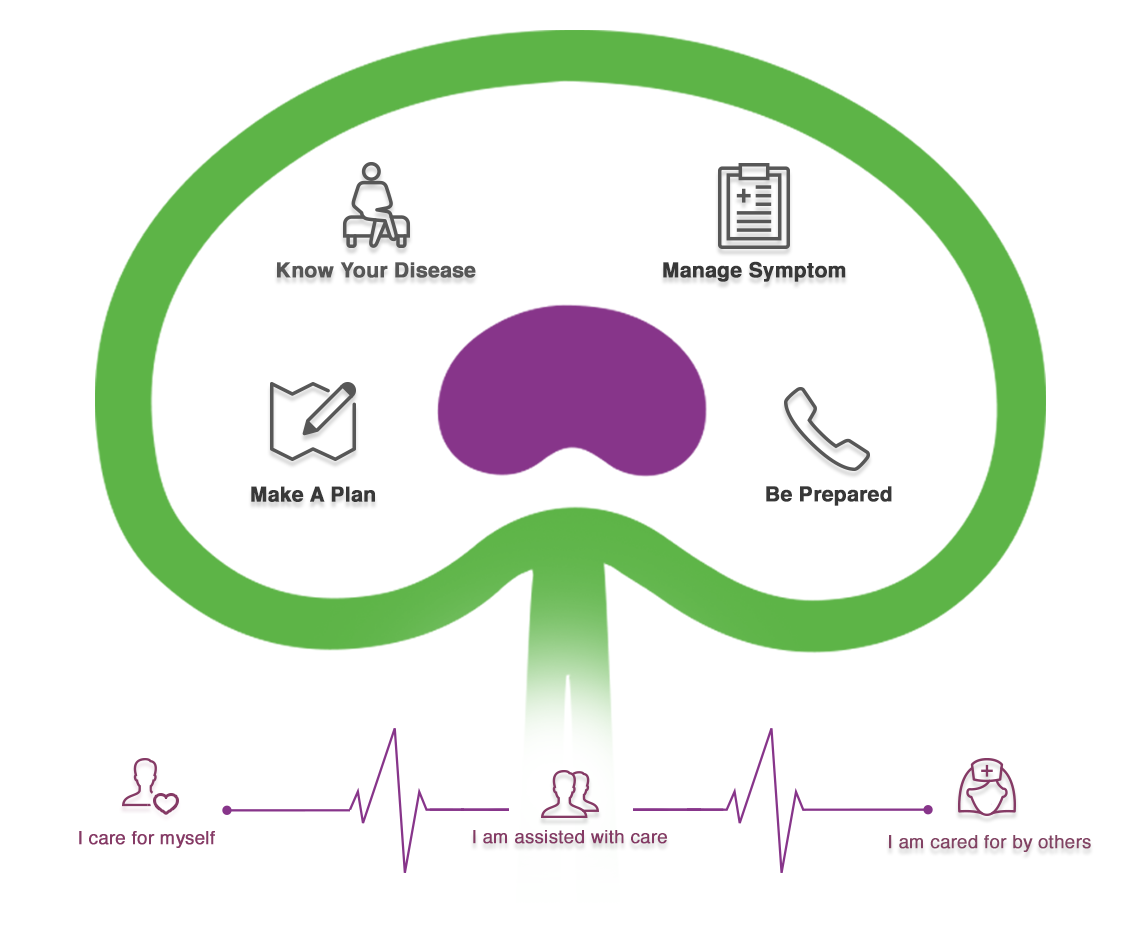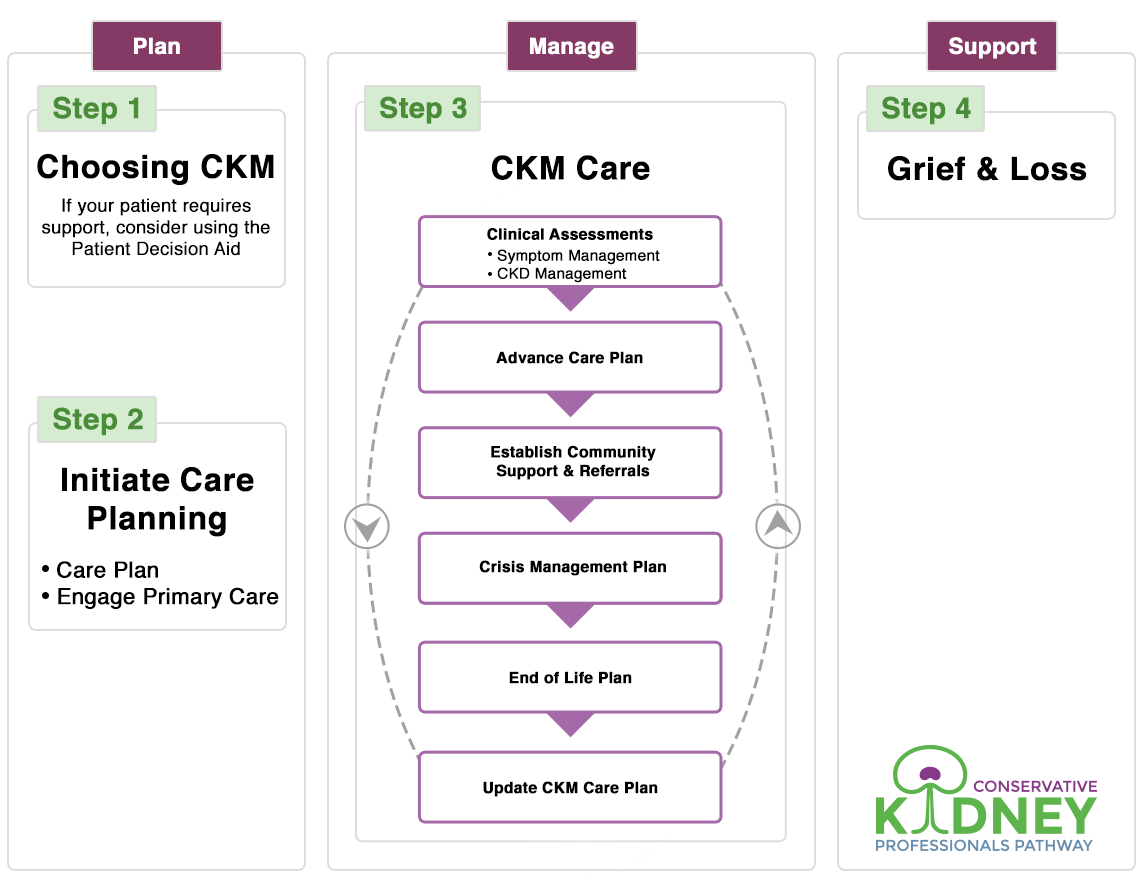Calcium/Phosphorous Guideline
Guiding Principles
- We recommend promoting quality of life through liberalizing diet and maintaining adequate nutrition rather than normalizing biochemistry.
- Kidney failure leads to changes in the metabolism of calcium, phosphorous, and active Vitamin D. CKD guidelines aim to normalize these factors to prevent bone abnormalitied and vascular calcification. However, it's not clear that there are benefits to normalizing in patients being cared for conservatively in the last few years of life. Rather, there is a possibility of harm in promoting lower protein intake in patients already at high risk for protein malnutrition.
- Hyperphosphatemia may contribute to Restless Legs Syndrome. Decreased active Vitamin D can lead to weakness, fatigue, and muscle loss. Calcium and phosphorous depositions can lead to myalgias, arthralgias, and pseudogout.
- Interventions partially normalize biochemisty such as a phosphorous-restricted diet, the use of phosphate binders and the administration of active Vitamin D should only be considered to minimize these symptoms.
- If the patient desires treatment for hyperphosphatemia, it would reasonable to check calcium and phosphorous levels every 3 months.
GFR 15 - 5 | Slow Decline/Deteriorating | Last 0-5 years of life
Although the interventions aimed at managing calcium and phosphorous may contribute to a significant number of pills for patients, the symptom management benefits are worth discussion. We have recommended reducing and simplifying the number and combinations of medications as much as possible.
Patients should liberalize their diet if they desire; they should also be made aware of the possible link between high phosphorous.
GFR 5 - 0 | Intensive/Near Death | Last 0-2 months of life
When the patient is bedbound and nearing the end of life, it is appropriate to stop interventions and bloodwork aimed at managing calcium and phosphorous levels. Related supplements and medications should be stopped.
Objectives
To guide the multidisciplinary approach to calcium and phosphorous management in conservatively managed ambulatory patients with CKD. Note that interventional guidelines do not replace individualized care and clinical expertise.
When evaluating calcium and phosphorous management using the clinical algorithms:
- If phosphate (PO4) is higher than the target range, review diet, phosphate binder timing and adherence, and provide education as appropriate.
- Note: Binder therapy is generally not increased if PO4 is accounted for by a modifiable dietary source.
- Always ensure correct binder timing and adherence before changing the dose. Binders should be taken during meals.
- Patient preference for different forms of calcium carbonate should be accommodated (e.g., change from pill to chewable form).
| Brand of Phosphorous Binder * ** | mg elemental/tablet |
|---|---|
| Calcium Carbonate 500 mg chewable (e.g.: TUMS® Regular) | 200 mg |
| Calcium Carbonate 625 mg (various manufacturers) | 250 mg |
| Calcium Carbonate 750 mg chewable (e.g.: TUMS® Extra) | 300 mg |
| Calcium Carbonate 1000 mg chewable (e.g.: TUMS® Ultra) | 400 mg |
| Calcium Carbonate 1250 mg (various manufacturers) | 500 mg |
| Calcium Carbonate 1500 mg (various manufacturers) | 600 mg |
| |
Reminder:
- Always ensure correct binder timing and adherence before changing the dose.
- If dose adjustment is required, consider appropriate dose adjustment to minimize pill burden.
- Binders should be taken during meals.
If calcium is higher than the target range, check for exogenous sources of calcium (e.g., TUMS®) prior to adjusting binders.
| Corrected calcium (mmol/L) | PO4 >1.48 mmol/L |
|---|---|
| < 2.10 - 2.54 | Elemental calcium 200 – 600 mg (once to up to three times/day with meals) |
| > 2.54 | Use non-calcium based binders |
Note: Corrected calcium is an adjustment made when albumin is < 35 g/L. Formula: [(40 - serum albumin) x 0.2] + serum calcium.
| Binder | Dosing | Considerations |
|---|---|---|
| Magnesium hydroxide Mg(OH)2 | Initial Dosing: 1 tablet/5 mL with largest meal 1 tablet = 311 mg Mg(OH)2 = 129 mg elemental magnesium Maximum dose of 6 tablets a day (maximum tolerance is usually 2 tablets a day due to loose bowel movements) |
|
Note: Magnesium-based binders and liquid calcium binders can be considered.
* See Dose Adjustment Guideline for Phosphate Binders
| Low or Normal Phosphorous | High Phosphorous |
|---|---|
|
|
Additional Resources:



